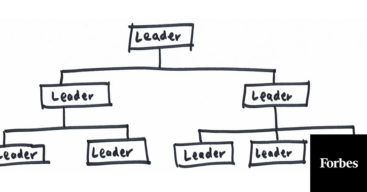Originally published October 16, 2020 on Forbes
The CEO job is tough. And it’s getting tougher as modern business gets more complex. The role of the CEO is different from any other in the organization. The CEO must see the entire context within which the organization is operating, understand myriad forces at play, set a broad vision, and be the final voice on difficult decisions.
In working with CEOs over the past twenty years, I’ve developed a list of ten goals that drive long-term value. The first six have to do with people. The last four are what great people deliver working together.
The value of this list isn’t its novelty. Rather it’s in capturing the breadth and complexity of the CEO role in a short, digestible, and demystified form. The list should provoke questions: How important is this goal? Why is it important? Are we delivering it? And how are we measuring success? It should provide a roadmap for assessment, dialogue, and prioritization of efforts.
Each goal is stated as an outcome rather than an action so as not to be prescriptive: There are many intelligent ways to approach these goals depending on context. The work of a CEO and executive team is to figure out the best path forward given their specific industry and situation. Under each goal is a brief description and key questions for consideration.
Ten goals that effective CEOs and their senior teams deliver:
1. Strong RELATIONSHIPS with all stakeholders
Customers, employees, suppliers, communities, board members, and shareholders are all critical to an organization’s success. When things turn bad for an organization it’s usually because one or more of these stakeholder groups have been neglected for too long. — Key questions for consideration: How regularly and robustly are we engaging stakeholder groups? How open is the dialogue? How clear are we about what’s on their minds?
2. Talented, diverse, and motivated PEOPLE
The right people in the right roles are pivotal to creating long-term value. It takes significant investment to build a winning talent engine from attraction and recruitment through development and retention. Efforts invested here become a competitive advantage that’s tough to replicate. — Key questions for consideration: Where is our talent engine strong and where is it weak? Have we raised talent to the right strategic level? If we haven’t, what will it take to do so?
3. Distributed and adaptive LEADERSHIP
No organization today can be successful in the long-term without distributed and adaptive leadership; business is too complicated, and changes come too fast. If leaders throughout the organization don’t have the judgment, skills, or authority to make quick calls it creates problematic bottlenecks. — Key questions for consideration: Where are we not pushing down leadership far enough into the organization? What’s holding us back?
4. Continuous LEARNING at the core of everything
To be in business today is to be somewhat paranoid. As technology upends industry after industry with increasing speed, an organization’s ability to learn and adapt quickly is essential to staying relevant. Moreover, continual learning and growth helps retain talent. — Key questions for consideration: How are we building learning into everything we do? How serious are senior executives about their own learning and development?
5. Clear VALUES alive in the organization
Organizational theorist Chris Argyris made the case that there are two sets of values in every organization: espoused values and values-in-use. When the two sets are far apart, values are empty words on a page. When they’re closer together, values provide meaningful power and focus. — Key questions for consideration: What are our espoused values? Are they the right values? Are we living them? If no, why not?
6. Collaborative, trust-based, and risk-tolerant CULTURE
The most significant driver of culture in an organization is senior leader behavior. Behavioral role-modeling cascades through an organization faster than any corporate initiative or change plan. — Key questions for consideration: How are senior leaders behaving? Are they role-modeling high trust, collaborative, and smart risk-taking behaviors? If not, what’s being role-modeled? And what’s the impact?
7. Shared and compelling VISION
A vision is a descriptive picture of the future. It’s effective when it provides broad clarity and inspiration regarding an organization’s direction. It fails when it’s not shared, compelling, or credible. — Key questions for consideration: How clear, compelling, credible and shared is our vision? Where and how do we regularly bring our vision to life?
8. Distinct and well-understood STRATEGY
In its simplest form, strategy is the allocation of limited resources in pursuit of a vision. It should play to strengths and create an advantage. Furthermore, it should provide guardrails and direction for making tradeoff decisions. — Key questions for consideration: Is our strategy clearly articulated and well understood? Does it provide appropriate direction for what we will and won’t do in pursuit of our vision?
9. Disciplined and dynamic EXECUTION
Strategy’s clean and elegant logic gets dirty in the real world. Successful execution requires disciplined processes that dynamically shift as needed. The faster business get, the more dynamic execution needs to become to keep pace. — Key questions for consideration: Do we have the right balance of discipline and dynamism in our execution? If not, where do we struggle?
10. Strong and sustainable PERFORMANCE
Organizations manage what they measure. Accordingly, a CEO must ensure the right things are being measured. Stakeholders should have a hand in helping to define appropriate metrics. — Key questions for consideration: What metrics matter most to our long-term health? How do we effectively measure them?
These ten goals are aspirational. No one nails all of them all the time. It’s best to use them to honestly self-assess where things are working and where they’re not. Where things aren’t working, the goals should tee-up productive exploration and discussion.
The list is also a reminder of just how challenging the CEO role is in our modern world. Where a CEO used to hold a vast majority of the knowledge needed to drive success in their industry, they now hold a fraction of that knowledge. Where they used to direct organizational activities, now they must facilitate them. Where they used to provide answers, now they must intelligently create the environment in which new answers can be collaboratively born and collectively pursued.



